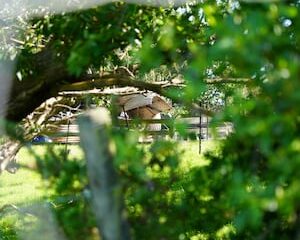Health
Australia Approves Chlamydia Vaccine to Protect Koalas

Australian regulators have granted approval for a vaccine designed to protect koalas from chlamydia, a disease responsible for approximately half of all deaths among these marsupials in the wild. Researchers announced the decision today, marking a significant advancement in efforts to combat this sexually transmitted infection that has been decimating koala populations, particularly in southeast Queensland and New South Wales.
For over a decade, scientists from the University of the Sunshine Coast have conducted trials of the chlamydia vaccine in controlled environments. The recent approval from the veterinary medicine regulator paves the way for a nationwide rollout of this single-dose vaccine. According to lead researcher Professor Peter Timms, the disease poses a serious threat to the survival of wild koalas, with infection rates in some populations reaching as high as 70%.
Impact of Chlamydia on Koala Populations
The trials demonstrated that the vaccine significantly reduces the likelihood of koalas developing chlamydia during their breeding years. Additionally, it has been shown to decrease mortality rates in wild populations by at least 65%. Previously, antibiotics were the only available treatment for infected koalas; however, this method disrupted their digestive systems and did not prevent future infections.
Chlamydia was first identified in koalas approximately 50 years ago. The infection can lead to serious health issues, including blindness, bladder infections, infertility, and ultimately death. The impact of this disease has been particularly severe on Australia’s koala population, which is already classified as endangered along the east coast.
Official estimates from Australia’s national monitoring program suggest that there are between 95,000 and 238,000 koalas residing in the eastern states of Queensland, New South Wales, and the Australian Capital Territory. An additional 129,000 to 286,000 are believed to inhabit Victoria and South Australia.
Threats to Koalas and Conservation Efforts
The koala population faces numerous challenges, including urban expansion, habitat destruction, and the ongoing spread of chlamydia. As a result, Australia has one of the highest rates of mammal extinction globally, with about 100 unique species lost over the past 123 years.
In response to the critical situation, the Australian government halted logging activities in a significant area along the eastern coast on March 15, 2024, as part of efforts to create a sanctuary for koalas and prevent their extinction. This initiative reflects a growing recognition of the need to protect one of Australia’s most iconic animals amid ongoing environmental challenges.
With the introduction of the chlamydia vaccine and other conservation measures, there is cautious optimism for the future of koalas in the wild. The commitment to safeguarding their populations is crucial in reversing the trend of decline and ensuring these beloved marsupials can thrive in their natural habitats once again.
-

 World2 weeks ago
World2 weeks agoPrivate Funeral Held for Dean Field and His Three Children
-

 Top Stories3 weeks ago
Top Stories3 weeks agoFuneral Planned for Field Siblings After Tragic House Fire
-

 Sports3 months ago
Sports3 months agoNetball New Zealand Stands Down Dame Noeline Taurua for Series
-

 Entertainment3 months ago
Entertainment3 months agoTributes Pour In for Lachlan Rofe, Reality Star, Dead at 47
-

 Entertainment2 months ago
Entertainment2 months agoNew ‘Maverick’ Chaser Joins Beat the Chasers Season Finale
-

 Sports3 months ago
Sports3 months agoSilver Ferns Legend Laura Langman Criticizes Team’s Attitude
-

 Sports1 month ago
Sports1 month agoEli Katoa Rushed to Hospital After Sideline Incident During Match
-

 World4 weeks ago
World4 weeks agoInvestigation Underway in Tragic Sanson House Fire Involving Family
-

 Politics2 months ago
Politics2 months agoNetball NZ Calls for Respect Amid Dame Taurua’s Standoff
-

 Top Stories3 weeks ago
Top Stories3 weeks agoShock and Grief Follow Tragic Family Deaths in New Zealand
-

 Sports2 weeks ago
Sports2 weeks agoEli Katoa Shares Positive Recovery Update After Brain Surgery
-

 Entertainment4 months ago
Entertainment4 months agoKhloe Kardashian Embraces Innovative Stem Cell Therapy in Mexico





















